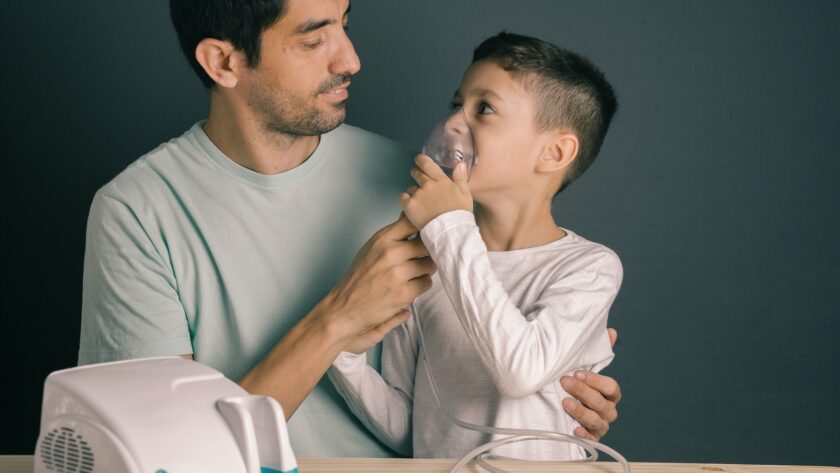Breathing is a fundamental aspect of life, and for those who rely on supplemental oxygen, the Philips Everflo Oxygen Concentrator is more than just a machine; it’s a lifeline. However, like any complex piece of equipment, it can encounter hiccups from time to time, and knowing how to troubleshoot common issues can make all the difference in ensuring your oxygen therapy remains uninterrupted.
In this blog post, we’ll embark on a journey to unravel the mysteries of the Philips Everflo Oxygen Concentrator, equipping you with the knowledge to overcome common challenges and keep your device humming along smoothly. So, if you or a loved one depends on this essential medical device, read on to discover how to tackle issues like a pro and breathe easier once more.
No Oxygen Flow
Issue:
You turn on the concentrator, but no oxygen is coming out of the tubing, or the oxygen flow is weak.
Solution:
a. Check if the power cord is connected correctly and the unit is plugged in.
b. Ensure that the oxygen tubing is not kinked or obstructed.
c. Inspect the inlet and outlet filters for blockages. Clean or replace them if necessary (refer to the user manual for instructions).
d. Check the oxygen flow setting and increase it if it’s set too low.
Strange Noises
Issue:
The Philips Everflo Oxygen Concentrator is making unusual or loud noises.
Solution:
a. Check for any loose parts or objects causing the noise and secure them.
b. Inspect the air intake and exhaust vents for obstructions or debris. Clean them if needed.
c. If the noise persists, contact customer support or a technician for a thorough inspection.
Alarms and Alerts
Issue:
The concentrator is beeping, and you see an alarm or alert message on the display.
Solution:
a. Check the display for error codes or messages. Check the user manual to identify the specific issue and recommended actions.
b. Common alarm triggers include low oxygen concentration, high internal temperature, and high/low pressure. Address the issue accordingly.
c. If you need help to resolve the problem, contact the manufacturer’s customer support or a qualified technician.
Inadequate Oxygen Supply
Issue:
You feel like you are not receiving enough oxygen even though the concentrator is running.
Solution:
a. Ensure the concentrator is set to the correct oxygen flow rate your healthcare provider prescribes.
b. Check the tubing and connections for any leaks. Replace any damaged parts.
c. Verify that the oxygen source (e.g., the oxygen concentrator) produces the intended oxygen concentration. You may need to have the unit serviced if it’s not.
Power Problems
Issue:
The concentrator doesn’t turn on or keeps shutting off unexpectedly.
Solution:
a. Confirm that the power outlet is working correctly. Test it with another device.
b. Check the power cord for damage and ensure it is securely connected to the concentrator.
c. Verify that the unit is placed on a stable surface and not overheating due to poor ventilation.
d. If the problem persists, contact Philips customer support or a qualified technician.
Common Error Codes On The Display Of The Concentrator
The specific error codes or messages that can appear on the display of a Philips Everflo Oxygen Concentrator may vary slightly depending on the model and version of the concentrator. However, here are some standard error codes and messages that you might encounter:
Error Code E01:
Meaning: This code typically indicates a low oxygen concentration in the output.
Troubleshooting: Check the oxygen source and ensure it is not empty or turned off. Verify that the oxygen flow rate is correctly set. Contact the manufacturer or a technician if the issue persists.
Error Code E03:
Meaning: E03 often signifies an issue with the oxygen sensor.
Troubleshooting: Contact the manufacturer or a technician for sensor replacement or calibration assistance.
Error Code E05:
Meaning: E05 typically points to an issue with the compressor.
Troubleshooting: Contact the manufacturer or a technician for compressor inspection and repair.
Error Code E07:
Meaning: E07 usually indicates a problem with the filter or airflow.
Troubleshooting: Check and clean or replace the air filter as needed. Ensure that there are no obstructions in the tubing or cannula.
Error Code E10:
Meaning: E10 can be related to power supply or voltage issues.
Troubleshooting: Confirm that the concentrator is plugged into a working power outlet. If the problem persists, consult with a technician for electrical system diagnostics.
Error Code E20:
Meaning: E20 may indicate a low-pressure issue.
Troubleshooting: Ensure that the tubing and cannula are clear of obstructions. Check for any kinks in the tubing that may be restricting airflow.
Error Code E90:
Meaning: E90 is a general error code that may indicate various issues.
Troubleshooting: Refer to the user manual for specific troubleshooting steps related to E90, as the exact cause can vary.
Alarm Messages:
The concentrator may also display alarm messages related to various issues, such as high temperature, low oxygen flow, or system errors. Consult the user manual for guidance on interpreting and addressing these alarms.
The Significance of Effective Troubleshooting for Oxygen Concentrators
Effective troubleshooting for oxygen concentrators is paramount for ensuring the well-being and safety of individuals who rely on these devices for their respiratory health. It serves as a proactive measure to promptly address any potential disruptions in oxygen supply.
Troubleshooting helps users and healthcare providers identify and resolve issues such as low oxygen flow, error codes, or alarms that can impact the concentrator’s performance. Moreover, timely troubleshooting can prevent emergencies, reduce downtime, and ultimately enhance the quality of life for those needing continuous oxygen therapy.
By understanding the significance of troubleshooting and having the knowledge to address common issues, individuals can maintain the reliability and efficiency of their oxygen concentrators, allowing them to breathe easier and with confidence.
Conclusion
The Philips Everflo Oxygen Concentrator is a valuable device for individuals with respiratory conditions. While it is generally reliable, understanding how to troubleshoot common issues is essential to ensure a continuous and safe oxygen supply. Always consult the user manual for specific guidance and contact healthcare professionals or the manufacturer’s customer support when in doubt. Regular maintenance and proper care will keep it functioning at its best.




